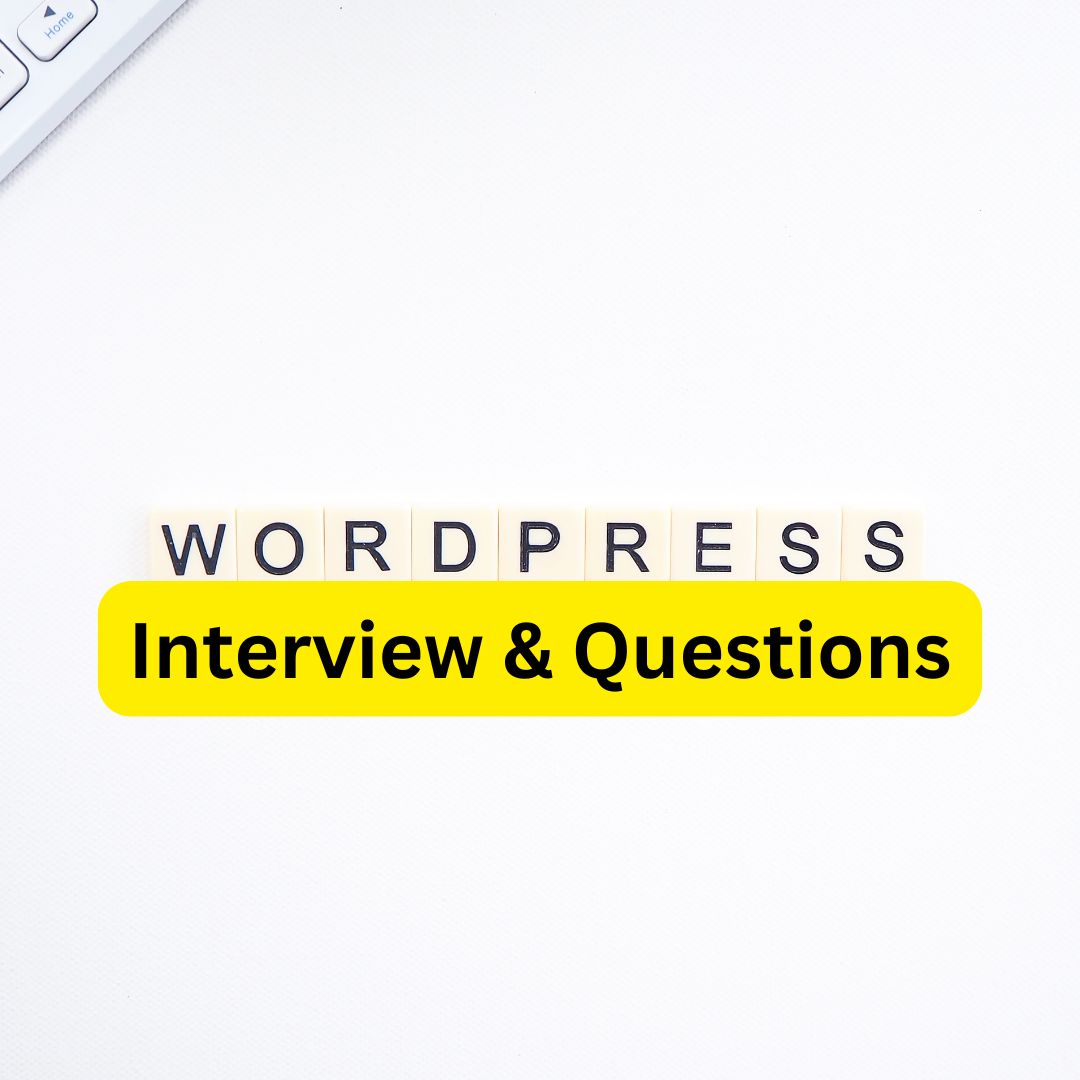These interview questions are designed for students who have a basic understanding of WordPress and its functionalities. Use these to test knowledge on WordPress development, themes, plugins, and overall CMS usage.
1. What is WordPress?
Answer:
WordPress is an open-source content management system (CMS) used to create websites and blogs. It is built on PHP and MySQL and provides users with an easy-to-use interface to manage content without needing technical expertise.
2. What are the key differences between WordPress.com and WordPress.org?
Answer:
- WordPress.com is a hosted service where you don’t need to worry about installation or hosting, but with limited customization options.
- WordPress.org is self-hosted, meaning you need to download WordPress, install it on your own hosting server, and have full control over customization and plugins.
3. How do you install WordPress on a local server?
Answer:
To install WordPress locally, follow these steps:
- Install a local server environment like XAMPP or MAMP.
- Download WordPress from wordpress.org.
- Extract the WordPress files into the web server’s root directory (e.g.,
C:\xampp\htdocs\wordpressfor XAMPP). - Create a MySQL database using phpMyAdmin.
- Run the WordPress installation process by accessing
http://localhost/wordpressand entering the database details.
4. What are WordPress themes and plugins?
Answer:
- Themes define the appearance and layout of a WordPress website. They control the design, structure, and style.
- Plugins add functionality to a WordPress site, such as adding a contact form, improving SEO, or integrating social media.
5. How can you improve the security of a WordPress site?
Answer:
- Use strong passwords for admin and user accounts.
- Keep WordPress core, themes, and plugins up to date.
- Install a security plugin like Wordfence or Sucuri.
- Regularly back up the website.
- Change the default admin username.
- Use an SSL certificate for secure data transmission.
6. What is a WordPress child theme and why is it used?
Answer:
A child theme is a theme that inherits the functionality and styling of another theme (called the parent theme). It is used to make modifications without altering the original theme files, which makes it easier to update the parent theme without losing custom changes.
7. How do you add a new post in WordPress?
Answer:
- Log in to the WordPress admin panel.
- Go to Posts > Add New.
- Enter the title and content of the post.
- Choose a category and add tags if necessary.
- Click Publish to make the post live on your website.
8. Explain the concept of WordPress widgets and how they are used.
Answer:
Widgets are small blocks that add specific content or functionality to sidebars or other widgetized areas of a WordPress site. Examples include recent posts, categories, search bars, and custom text areas. Widgets can be added and customized from the WordPress dashboard under Appearance > Widgets.
9. What is the purpose of the WordPress “wp-config.php” file?
Answer:
The wp-config.php file is one of the most important files in a WordPress site. It contains the database connection settings (e.g., database name, username, and password), security keys, and other essential configuration settings needed to run WordPress.
10. What is a WordPress shortcode and how is it used?
Answer:
A shortcode is a WordPress feature that allows users to add dynamic content (like galleries, forms, or buttons) into posts or pages by using simple, enclosed tags (e.g.,
11. How can you create custom post types in WordPress?
Answer:
Custom post types are used to create content types beyond the default posts and pages. You can create a custom post type by adding a function to the functions.php file of your theme or by using a plugin like Custom Post Type UI. Example:
function create_post_type() {
register_post_type('product', array(
'labels' => array(
'name' => 'Products',
'singular_name' => 'Product',
),
'public' => true,
'has_archive' => true,
));
}
add_action('init', 'create_post_type');
12. What is the WordPress loop and how does it work?
Answer:
The WordPress loop is the code that WordPress uses to display posts on your website. It fetches content from the database and displays it according to the template file being used. The loop iterates through each post and applies the correct layout and formatting.
13. How do you optimize a WordPress site for SEO?
Answer:
- Use SEO-friendly URLs (permalinks).
- Install an SEO plugin like Yoast SEO or Rank Math.
- Add meta tags, titles, and descriptions for all pages and posts.
- Optimize images by reducing their size without compromising quality.
- Use proper heading tags (H1, H2, etc.).
- Create a sitemap and submit it to search engines.
14. What is caching in WordPress and why is it important?
Answer:
Caching stores frequently accessed data temporarily to improve website performance by reducing server load. In WordPress, caching can be done using plugins like W3 Total Cache or WP Super Cache, improving page load times and user experience.
15. How would you migrate a WordPress site from a local server to a live server?
Answer:
- Use a plugin like All-in-One WP Migration to export the local site.
- Install WordPress on the live server and use the same plugin to import the site files and database.
- Alternatively, manually copy the site files and import the database using phpMyAdmin.
- Update the WordPress site URL in the database if necessary.
These questions will help assess the understanding of basic WordPress concepts, from installation and configuration to more advanced topics like custom post types and SEO.





